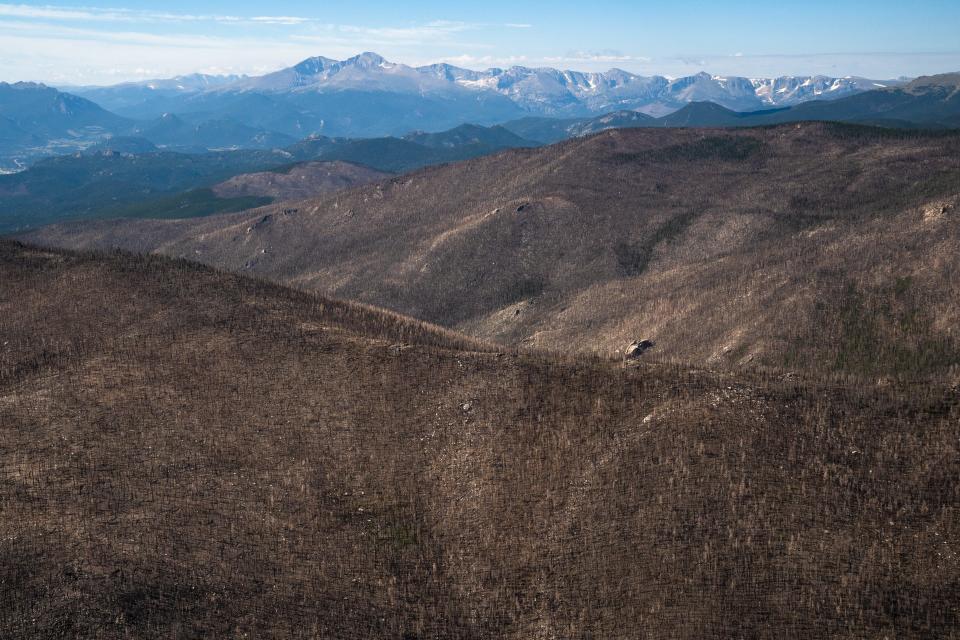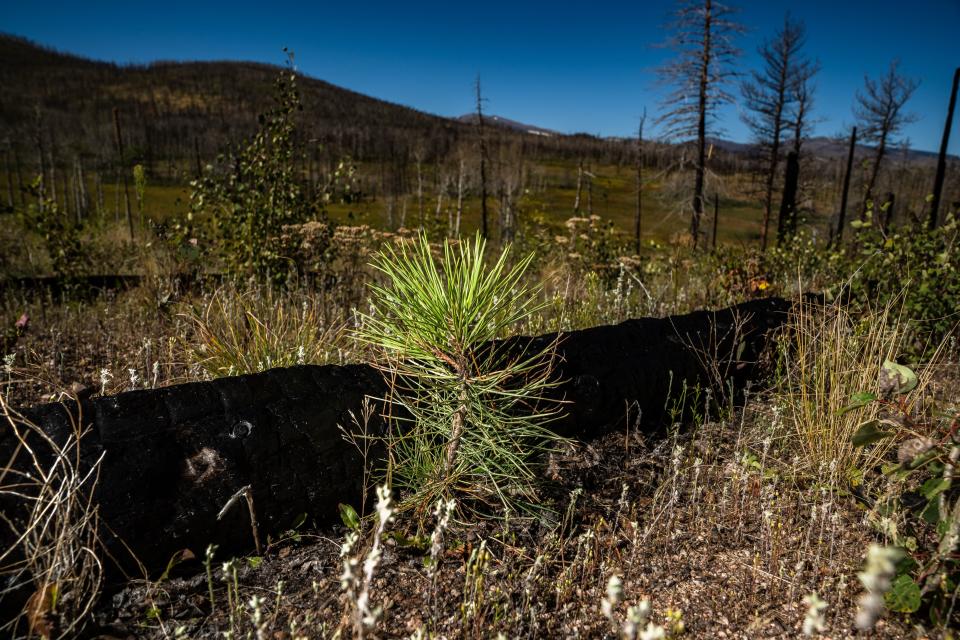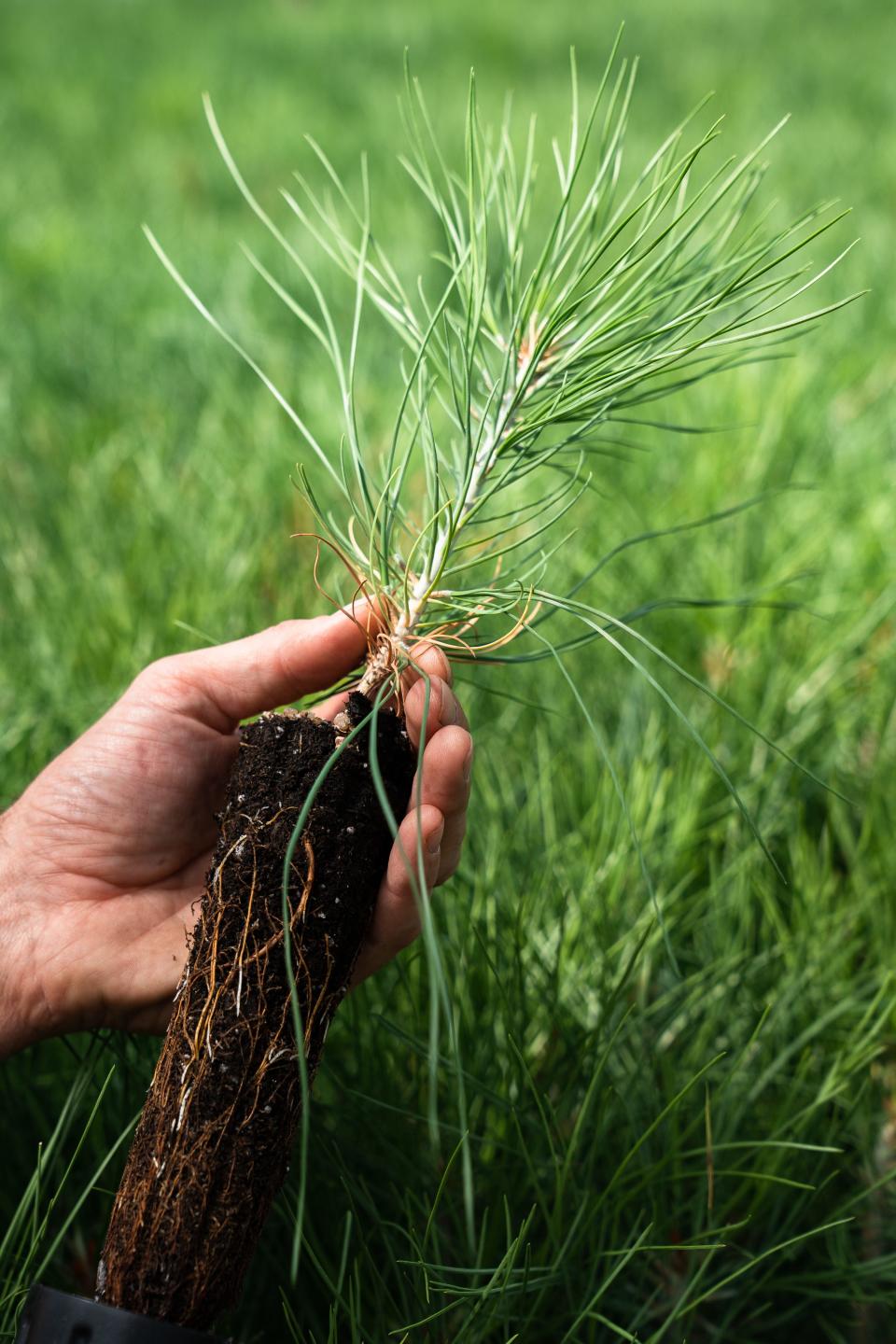Open wounds: Colorado wildfire experts worried by lack of new vegetation in burn areas
Recent flights over Colorado's historic Cameron Peak and East Troublesome fire burn scars revealed a troubling observation: Three years after the state's largest wildfires scorched nearly 400,000 acres, nearly half of those acres are still so severely burned that little to no regrowth has taken place.
That has caused concern among a cadre of local researchers from federal and state governmental agencies, Colorado State University, conservation groups and private industry studying the vast scar from 2020.
Sarah Beck, Arapaho and Roosevelt National Forests fire recovery coordinator, said more precise aerial mapping of the scar will be forthcoming, but for now, large areas of the burn scar are not seeing expected revegetation recovery.
"These patches of high burn severity are so large there is a real possibility of recovery taking 50 years or longer," she said. "It's really concerning. I don’t think we have seen this in North America. I think this is a new condition in complexity."

Band-Aids such as aerial mulching, installation of check dams and tree seedling plantings were applied after the fires ripped through three major watersheds — Poudre, Big Thompson and Colorado rivers — to reduce impacts of post-fire devastation. They helped, but still the fire's impacts were staggering:
Six people (all in Larimer County) were killed in flash floods in the Cameron Peak Fire burn scar.
Cities such as Fort Collins and Greeley and other municipalities have spent tens of millions of dollars on water quality mitigation from sediment and debris in the Poudre River and other water sources.
Larimer County suffered nearly $5 million in post-fire recovery costs.
Northern Water's Colorado-Big Thompson Project watersheds have been heavily impacted, threatening water quality for more than 1 million people relying on project water.
Thousands of prized trout were completely wiped out for miles on the Poudre River from the post-fire Black Hollow Flood.
Faced with an enormous job, Forest Service hatches new plan to help burn scars recover
With the enormity and complexity of post-fire impacts still looming three years later to human safety, critical water supplies, recreational facilities and fish and wildlife, the U.S. Forest Service has begun a new approach.
In August, it announced a partnership with the nonprofit conservation organization American Forests to develop a longer-term reforestation strategy for the burn scars. The planning will continue to be developed collaboratively with input from community-connected partners, research institutions and local and state agencies.
"The problem is really big, and it is not something we have the capacity to tackle alone," Beck said.

The plan will focus on establishing a priority list and the best strategies to address the problems as identified by the vast amount of research being applied to the burn scars.
The Forest Service has received $111 million from the federal government for post-fire recovery efforts. About $22 million of that went to aerial mulching of 10,000 acres in the Poudre and Big Thompson watersheds.
The 112-day Cameron Peak Fire was the state's costliest wildfire to fight at $134 million.
'We need to give nature a nudge'
The lack of revegetation will be a focus of the new strategy.
Beck said in the large severe burn areas, the natural seed bank was destroyed, making natural dispersion of seeds from surrounding vegetation difficult. This is especially true on steep slopes.
"In some of these areas, if we are going to wait for natural seed dispersion, we are talking decades and decades to see revegetation," she said. "In these areas, we need to give nature a nudge."
That nudge is called nucleation planting.

The idea is to focus on small areas, about a quarter of an acre, that are favorable for growing conditions where a concentration of planted grasses, wildflowers, and trees have a greater chance to take hold and disperse seeds. The expectation is regeneration will infill sooner than if nature is left on its own.
Jeff Stahla, Northern Water spokesperson, said the strategy allows for a solution in the scope of what agencies can do on such a large landscape. "What this does is put in plugs here and there across a bald landscape in the hope that the seeds spread out.''
The Coalition for the Poudre River Watershed and other nonprofit groups have already planted more than 10,000 ponderosa pine and blue spruce seedlings in strategic areas of the burn scar with the help of volunteers. The trees are grown locally at the Colorado State Forest Service tree nursery in Fort Collins using local seed sources.
Other strategies, such as aerial mulching, check dams and wattles will continue to be evaluated for effectiveness and considered to help dissipate impacts of heavy rain in critical areas.
Also, fire prevention measures such as mechanical thinning of trees and other vegetation and prescribed burns will continue to take place to prevent risk to communities from future fires.
Cameron Peak, East Troublesome fires will forever change the landscape
Beck said the severity of the Cameron Peak and East Troublesome burn scars, high elevation at which they burned and climate change will likely result in a much different forest than before the fires.
One of the reasons the Cameron Peak Fire burned so hot in areas was abundant fuel in the fire's path — dead and dying trees from drought and beetle kill.
The Cameron Peak Fire burned mainly lodgepole pine, ponderosa pine and Engelmann spruce. Mainly ponderosa pine and blue spruce are being replanted. Lodgepole pine trees have already reseeded in some areas within the burn scar thanks to their ability to disperse seeds induced by fire.

"This landscape will never look the same as before the fires in our lifetimes and maybe not for our children's children," Beck said.
Stahla said areas of the Cameron Peak and East Troublesome fire burn scars will look like areas damaged by the 2002 Hayman Fire northwest of Colorado Springs, where more than 20 years later some of the burn scar has not regenerated.
"We can be pessimistic how it's never going to recover," he said. "I would prefer looking at it as the glass is half full. It will recover, but it will look different in our lifetime and for our grandchildren not even born."
Cameron Peak Fire impacts
208,913 acres
325-mile-long fire perimeter, roughly the driving distance from Fort Collins to Grand Junction
More than 1,050 stream miles, about 60% of which were located in the Poudre watershed
124 trail miles, including 95 miles in the Poudre watershed
32 miles of Wild and Scenic-designated river corridor burned
Three watersheds affected (Poudre, Big Thompson and Laramie)
At least five reservoirs that store and deliver water to the Front Range for agriculture and drinking water needs damaged
At least 16 mountain communities and neighborhoods in the burn area or immediately adjacent to it affected
492 structures destroyed (residential and outbuildings)
Source: Coalition for the Poudre River Watershed, CSU
This article originally appeared on Fort Collins Coloradoan: Bare Cameron Peak, East Troublesome burn scars worry wildfire experts

